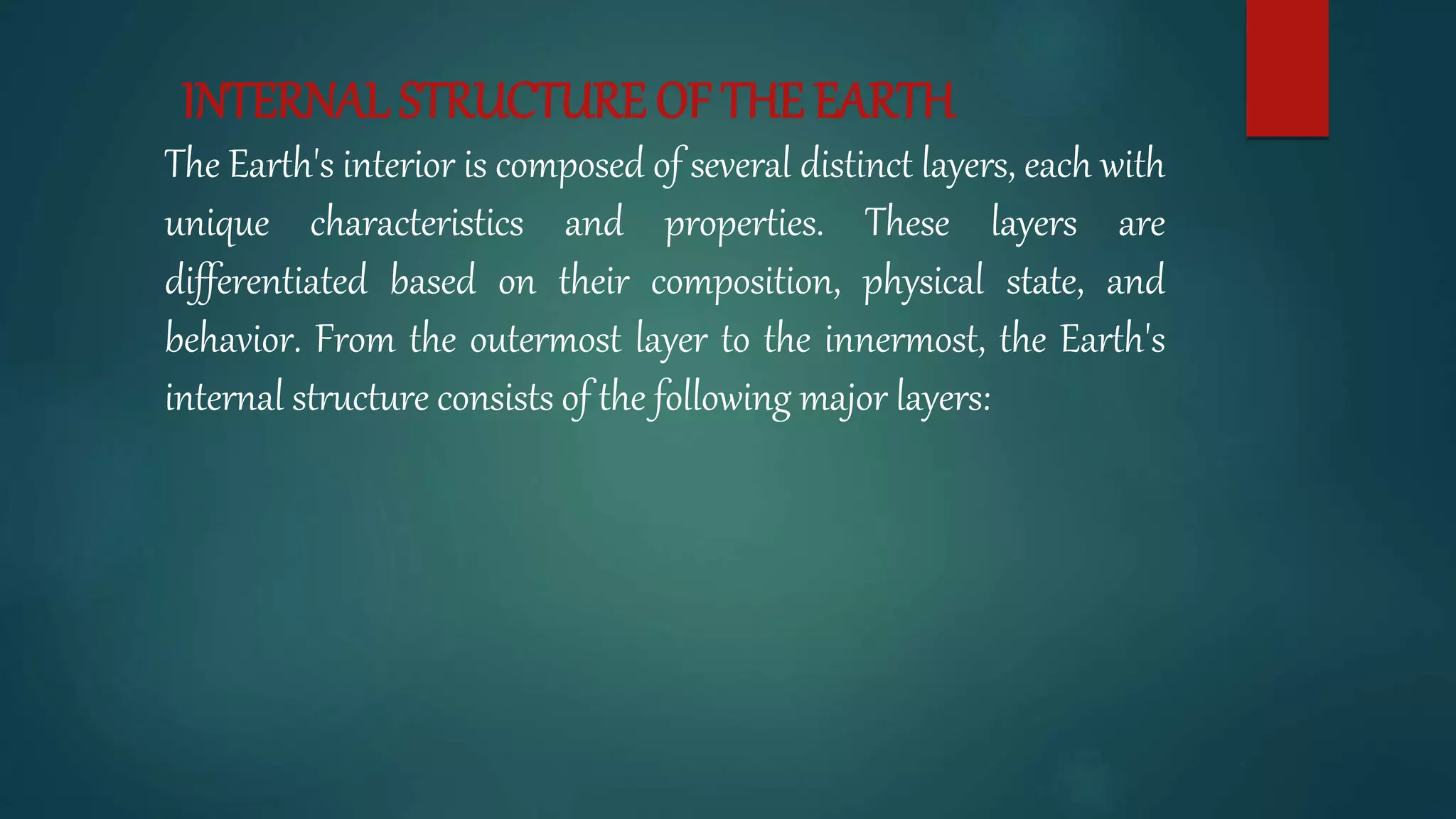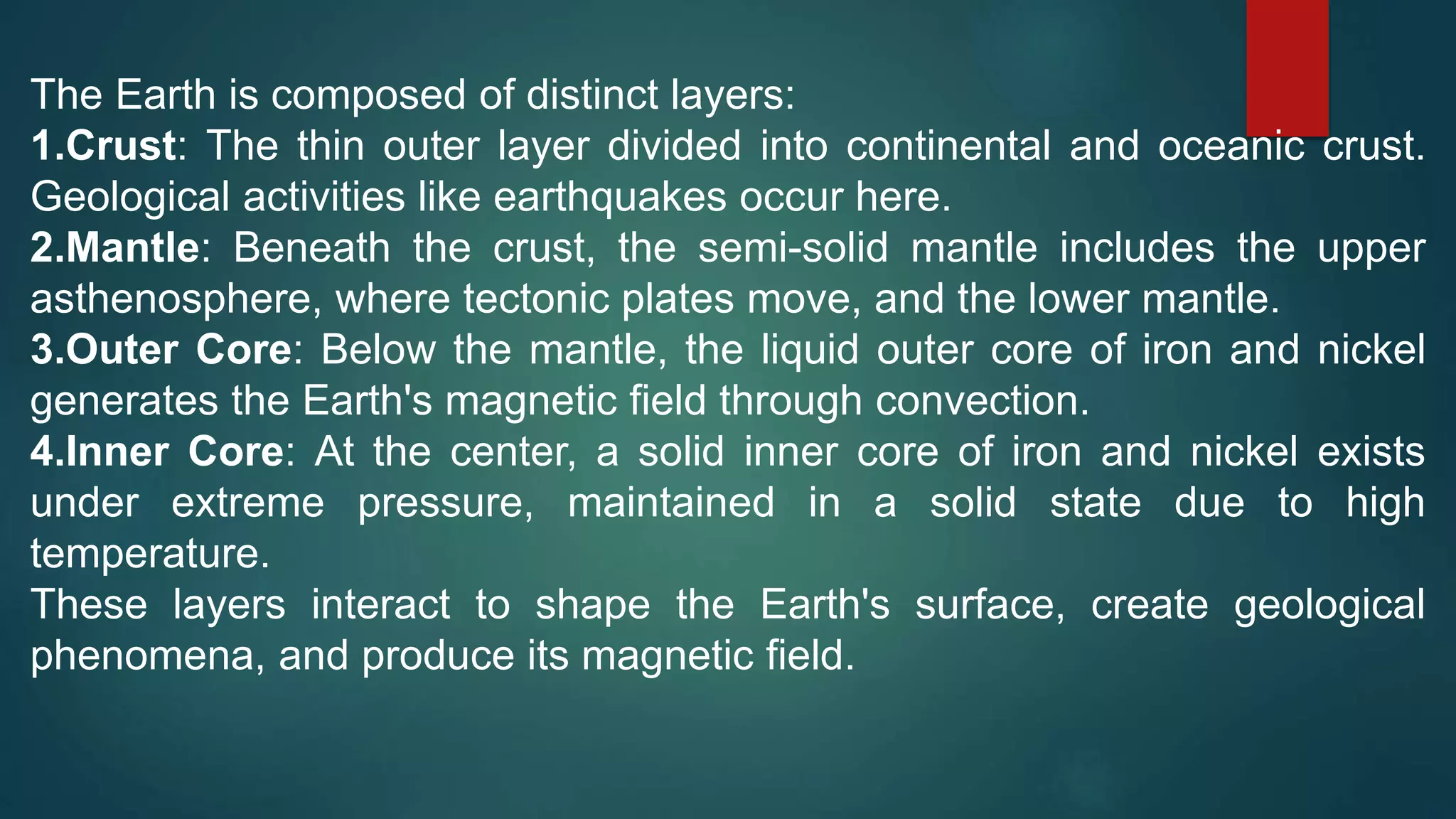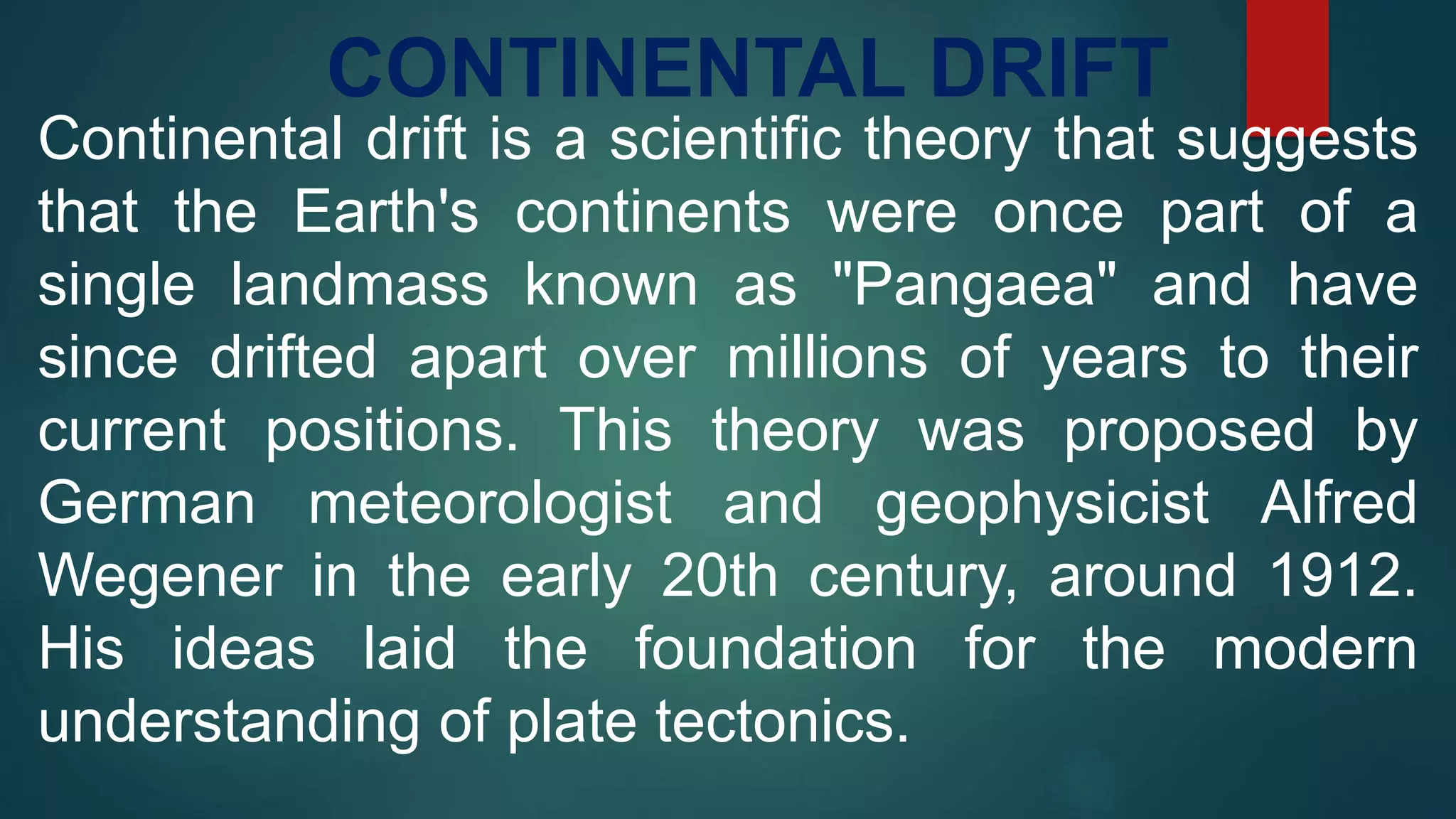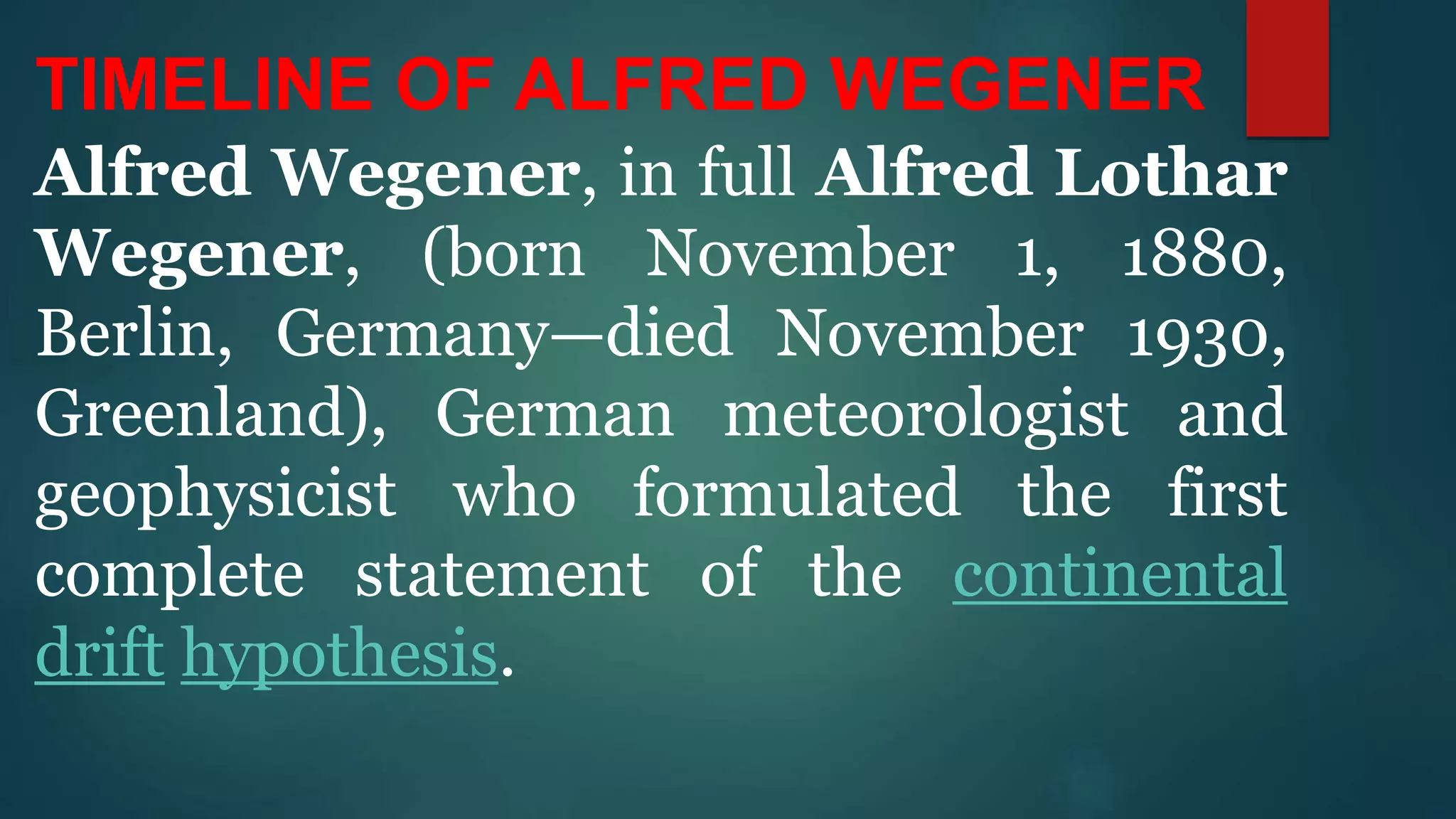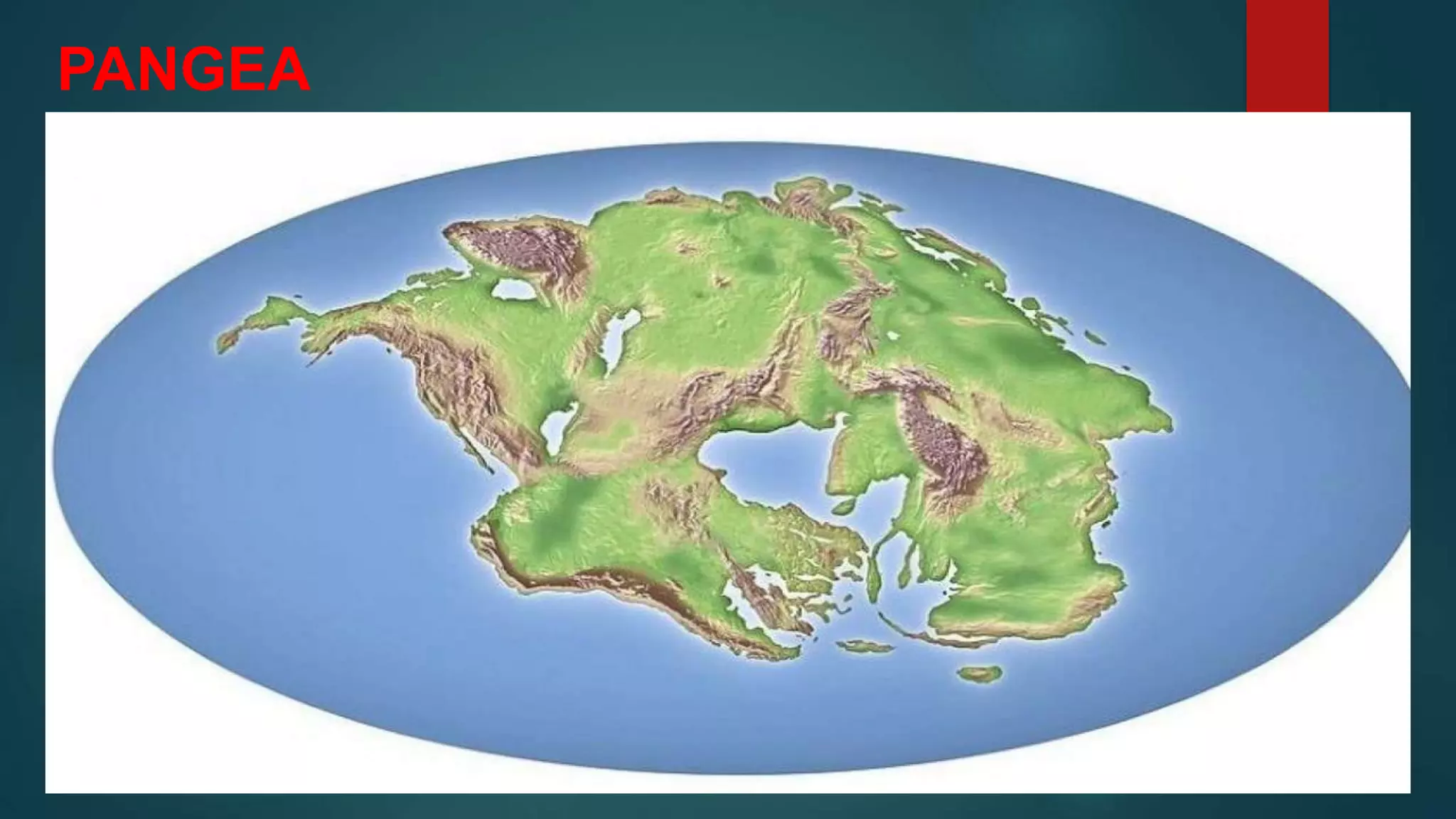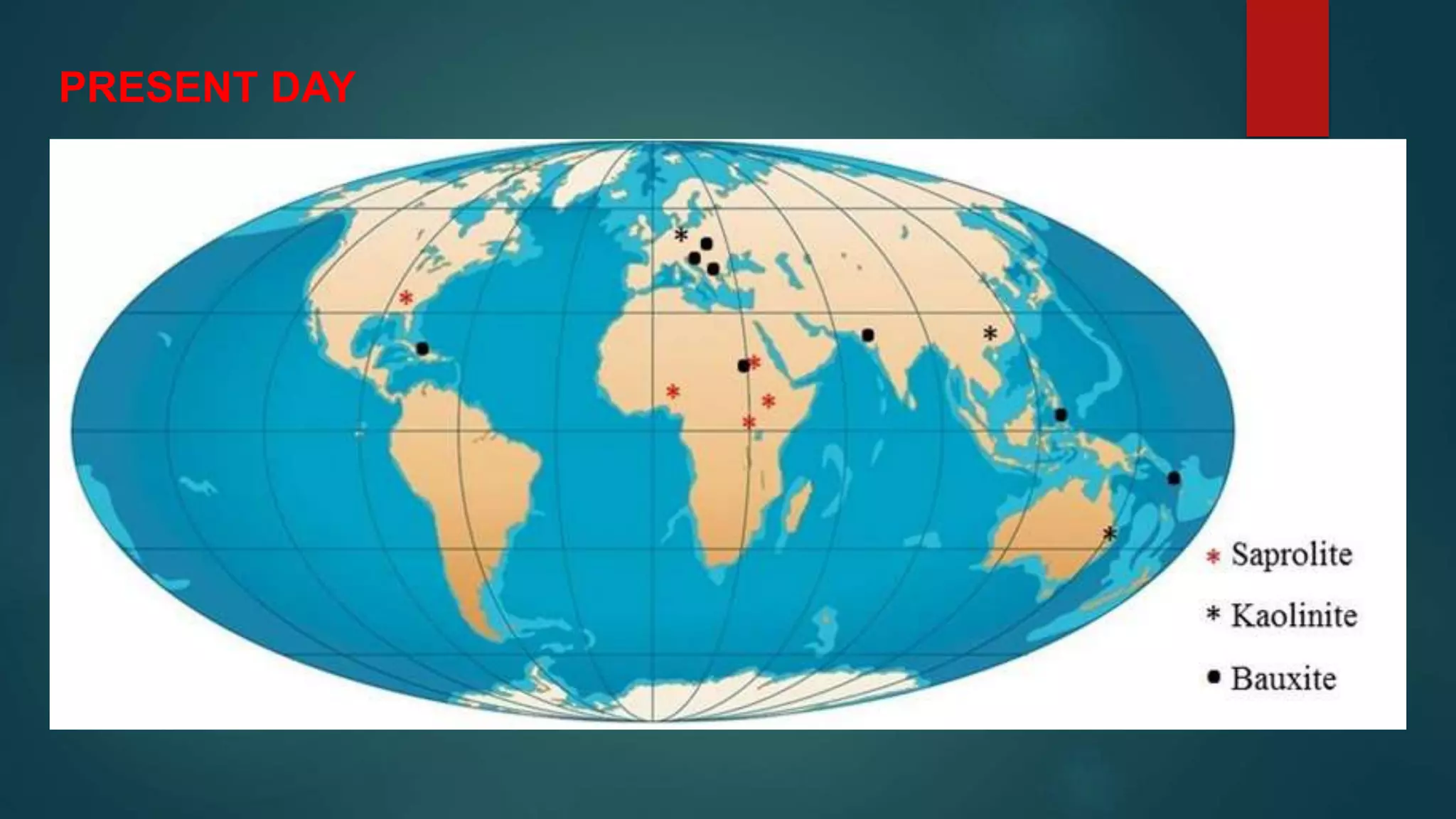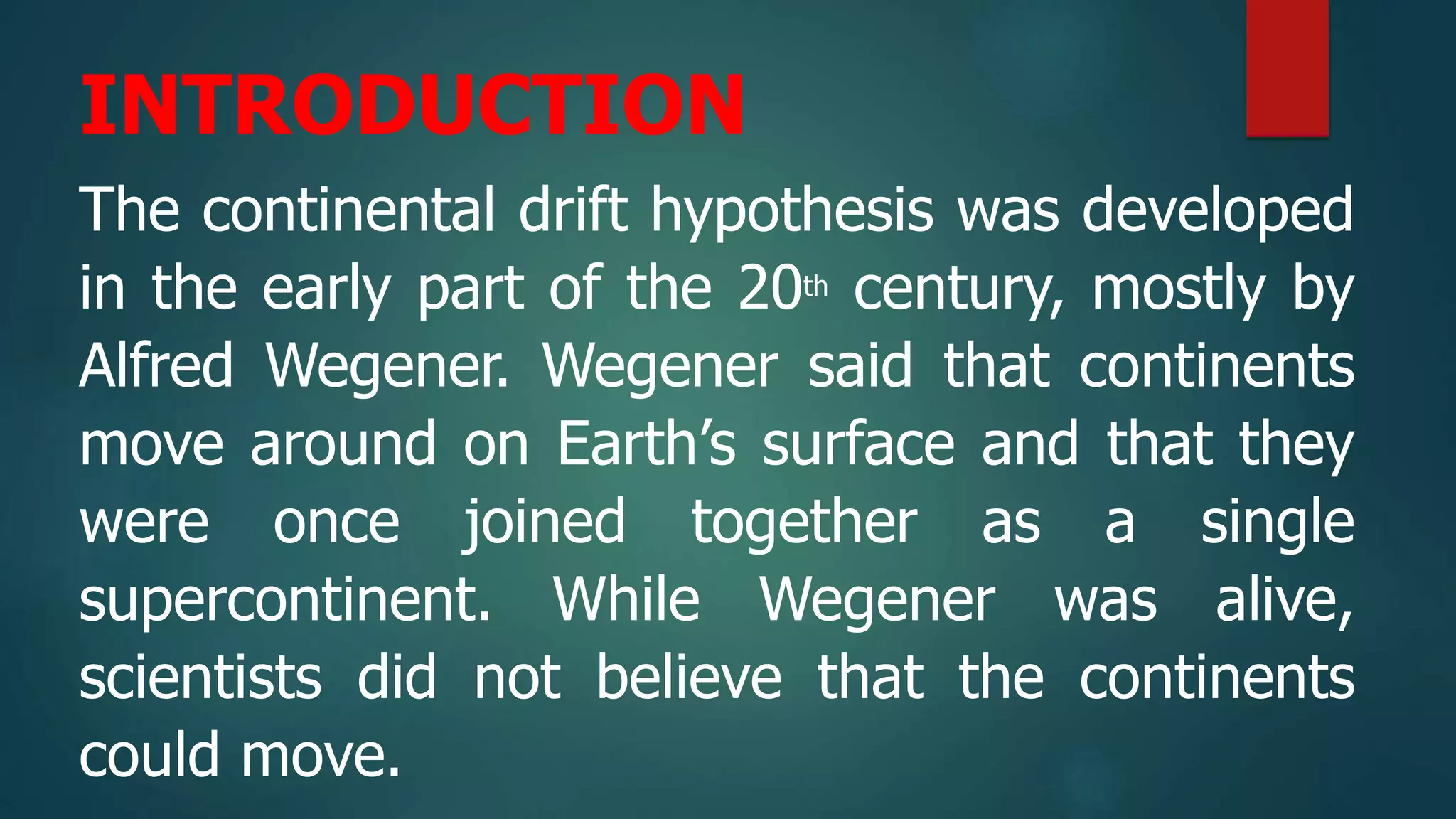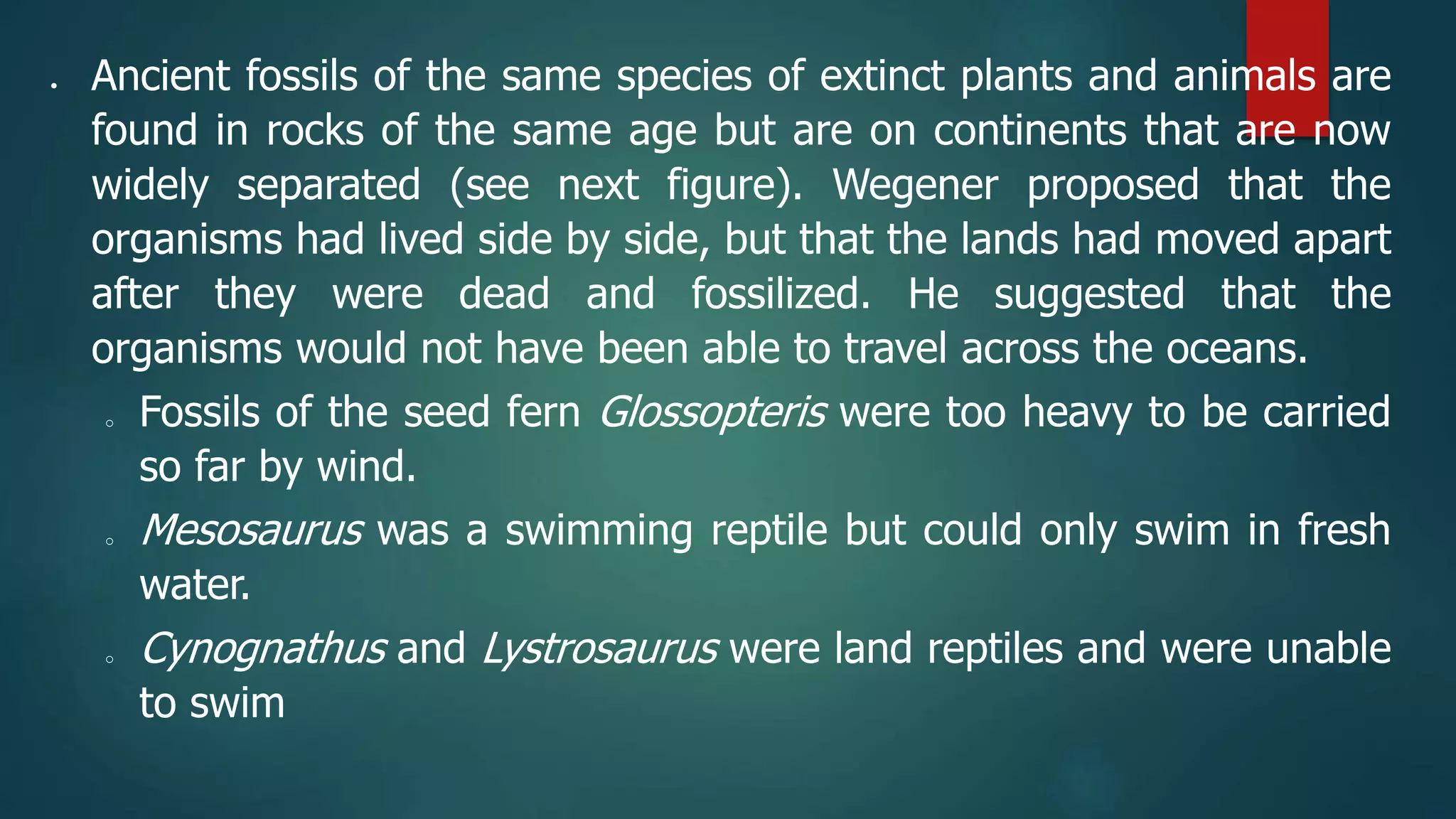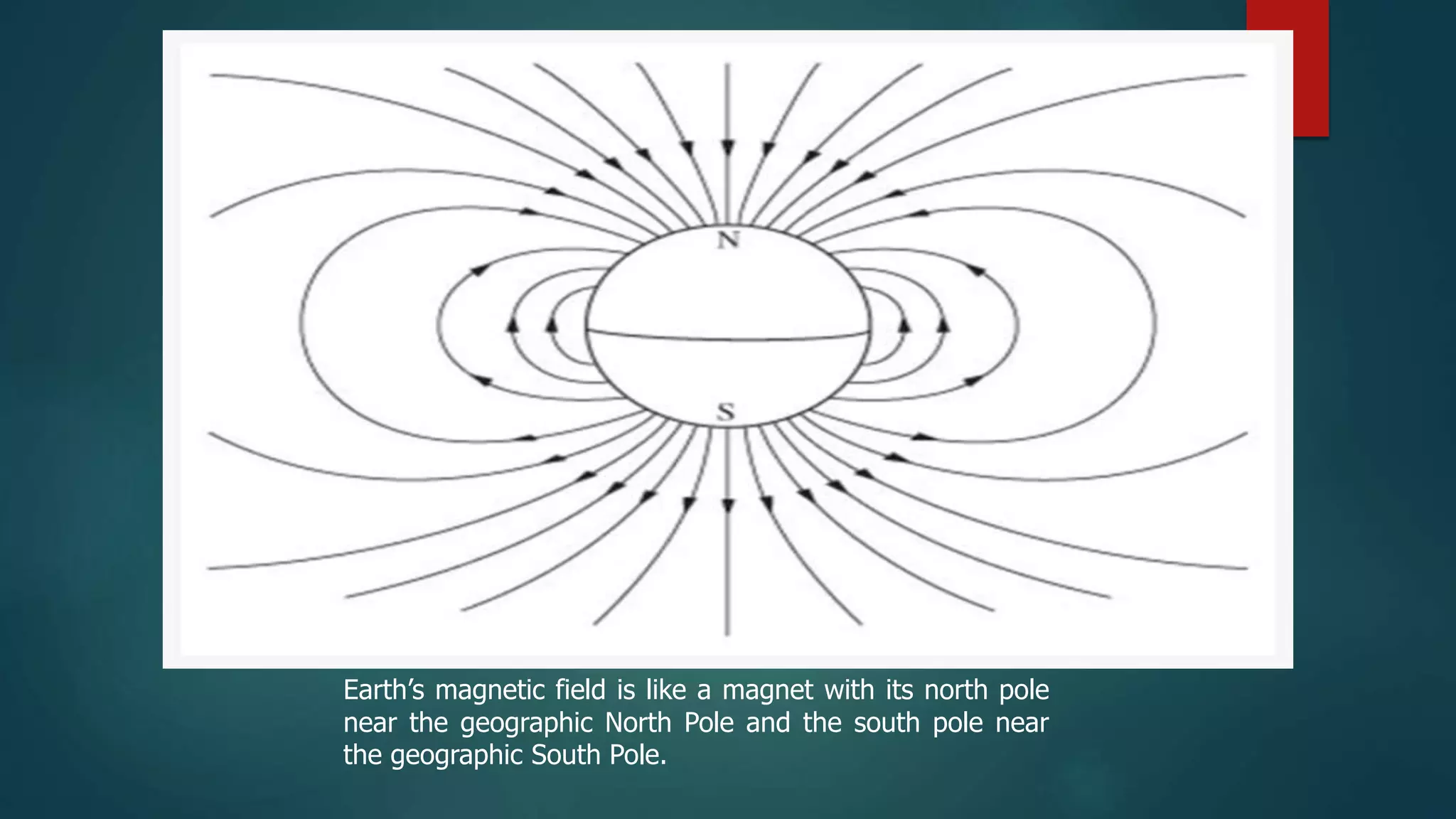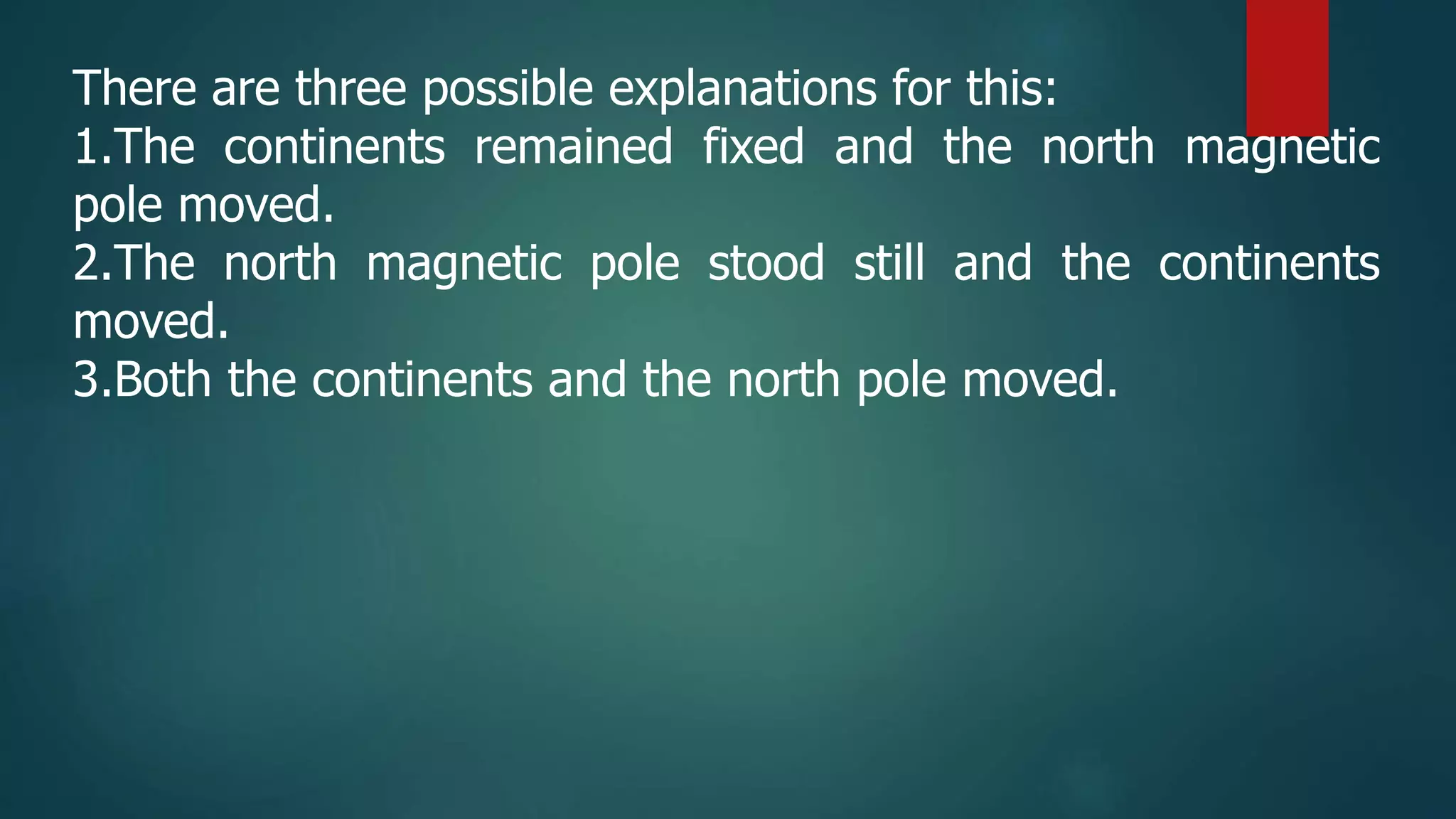The document discusses the development of the theory of continental drift by Alfred Wegener in the early 20th century. It provides evidence that supported Wegener's hypothesis, including: the fit of continental coastlines, matching fossil distributions, and correlations between rock and mountain formations on different continents. The theory was initially rejected due to the lack of a proposed mechanism for continental movement, but gained renewed interest after the discovery of apparent polar wander in rock magnetic polarity studies.
